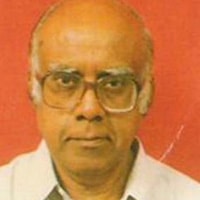Opinion Hyderabads true home
Hyderabad deserves greater autonomy within a future,potentially bifurcated,Andhra.
Asaduddin Owaisis intervention in these pages (Hyderabad and hinterland,IE,October 12) was a welcome departure from the cries for bifurcation or trifurcation of Andhra Pradesh. As the long-time representative for Hyderabad in Parliament,Owaisi drew attention to the striking figures ofthe citys demographic,economic and institutional growth in the past two decades.
A city cannot rest only on the glories of its past,though Hyderabad has many. Its institutions,including Osmania University notwithstanding its present strife-torn condition were long considered important centres of learning. The geographical centrality of Hyderabad also prompted several important national institutions to be set up in the area. To this generally positive situation,N.T. Rama Rao added the element of Telugu pride and identity in the early 1980s,later pursued by Chandrababu Naidu. Hyderabad eventually emerged as an IT hub,and its exports of IT,drugs and pharmaceuticals and other goods exceed Rs 80,000 crore annually,and are a significant proportion of Indias total exports.
The global linkages of an exporting city also entail global responsibilities. Political stability and the continuity of investment,infrastructure and human resource policies are critical elements in fulfilling those responsibilities. It is on this that the future growth of Hyderabad and its continued global status depends.
When Telangana-related conflict became manifest during the past decade,somehow they were kept in check by the special skills of Y.S. Rajasekhar Reddy. His unfortunate demise in an air crash removed the lid from the pot; and the Srikrishna Committees multiple options yielded no comfort to the contending parties.
Realities cannot be ignored. Geographically,Hyderabad is a part of Telangana and cannot be hived off. Making it into a Union territory would be a blatant denial of its geographical,demographic and political continuity.
Besides,the Indian experience with Union territories has not been all that good. Chandigarh is cited as an example,forgetting that Chandigarh today is a shared capital and much more than that,it is an urban complex larger than the Union territory,comprising Mohali,Panchkula and stretching towards Himachal. Its administrator also doubles up as governor of Punjab. The National Capital Territory of Delhi is also much more than a Union territory. It is a city-state with a legislature of its own,and a significant division of powers and responsibilities between the Union government and the state. Even in the limited course of our history since Independence,we have experimented with other organisational approaches such as Part C states,autonomous councils and so on. In figuring out a special status for Hyderabad,we need not,therefore,confine ourselves to the Union territory box.
It is obvious that the stakeholders in Hyderabad are many. Apart from the descendants of the Nizams capital,todays Hyderabadi is drawn from different parts of the country,be it Telangana or Rayalaseema,Maharashtra or Tamil Nadu,or anywhere else. Its workforce is highly varied; so are its entrepreneurs. Its educational,research and other institutions have a national clientele. What is necessary is to ensure that Hyderabads governance is truly intergovernmental and interinstitutional,drawing legitimacy and support from the Union,state (states,if that is inevitable),the local bodies and the important institutions of trade,industry and services.
Without waiting for the outcome of the debate on bifurcation and trifurcation,urgent consideration should be given to assess and determine,as Owaisi has said,how the economic,business,social,cultural and linguistic interests of all those who have made Hyderabad their abode can be safeguarded. A special organisational set-up for Hyderabads governance a metropolitan council,regional council,or whatever should be devised,with formal recognition and representation from the different interests,including representatives of Telangana,Rayalaseema and coastal Andhra regions. The parameters to be considered include: the geographical limits of the special area; the subjects which will be within the domain of this council; and the special organisational arrangements needed. Some existing,relevant state laws,such as the HMRDA,can be re-visited.
These are not matters beyond the comprehension or competence of the leadership in Andhra or at the Centre. If models are needed,they are available,whether within the country or beyond,but what is required is to begin a serious discussion with the concerned leaders.
The governance arrangements in Indian megacities are totally out of sync with their role as important engines of the countrys economy and their role in the world. A careful and objective search for alternatives for Hyderabad may well serve as a model for the rest of the country.
The writer is chairman,Centre of Policy Research,Delhi



